What is difference between self fertilization and cross fertilization | differentiate between cross fertilization and self fertilization | self fertilization and cross fertilization difference.
Fertilization in animal involve fusion of two haploid gametes sperm and ovum to form diploid unicellular zygote. Zygote undergoes further development by repeated mitotic division by the process of embryogenesis to form diploid offspring.
According to source, formation, fusion and development of gametes in gonad of parents fertilization is categorised into two types:- 1) self fertilization and 2) cross fertilization.
Table of Contents
What is the self fertilization and cross fertilization?
Self fertilization involves the fusion of two haploid male and female gametes that’s comes from single parent, that’s why it is uniparental. Both male and female sex cells form and develop in single gonad. It is very rare process found in taenia solium and fasciola which is bisexual in nature.
Cross fertilization involves the fusion of two haploid male and female gametes that’s comes from two different parents, that’s why it is biparental. Both male and female sex cells form and develop in two different separate gonad. It is common process found in earthworm, cockroach, frog and human beings.
What is self fertilization?
What is self fertilization?, those fertilization which involves the fusion of two haploid male and female gametes that’s coming from single parent is called self fertilization. Generally it is uniparental, both male and female sex cells form and develop in single gonad, and very rare process found in bisexual animal like taenia solium and fasciola.
Self fertilization is found in Taenia solium Species, in which male and female gametes develop in one gonad in mature proglottid. Taenia solium is human parasite live in intestine, their body posses head, neck and made of various segment known as proglottid.
Body of tape worm segment is divided into imature proglottid near neck, and in middle mature proglottid bearing male and female sex organ mature at same time and causing fusion of gametes to form diploid zygote. Further zygote develops into embryo and mature proglottid change into gravid proglottid and detached from parents body and egested outside from body with faecal matter.
Define self fertilization?
Self fertilization is define as fusion of male and female gametes that’s coming from same individual or single parent. Usually it is endogamy type of fertilization in which selfing of gametes involves. It is very rare process found in taenia solium (tape worm) and fasciola.
What is self fertilization called?
Self fertilization is called endogamy in which fusion or selfing of two haploid male and female gametes derived from same parents and same gonad in bisexual animal in taenia solium and fasciola
What are examples of self fertilization?
Common examples of self fertilizating animals are taenia solium which is commonly known as tape worm and fasciola. It is very rare and uncommon process found in some bisexual animals in which male and female sex organs develop in single gonad.
What are important features and characteristics of self fertilization?
1) self fertilization is known as endogamy in which fusing gametes derived from same parents
2) male and female gametes are formed in one gonads of same parent and mature at same time.
3) it is uniparental fertilization
4) it is very rare process
5) it is found in Species Taenia solium and fasciola
6) fusing gametes derived from same parents
7) loss of biological fitness and genetic variability.
What is cross fertilization?
What is cross fertilization?, those fertilization which involves the fusion of two haploid male and female gametes that’s coming from two different parents is called cross fertilization. Generally this is biiparental, both male and female sex cells form and develop in two separete gonad in single bisexual organis like Earthworm or into different unisexual organism like frog, and this is common process found in bisexual animal like Earthworm and unisexual like cockroach frogs and human beings.
Earthworm is also bisexual animal, but there male and female gametes develop in different gonads of same parent which mature at different time so self fertilization is not possible in earthworm although it is bisexual animal.
Define cross fertilization?
Cross fertilization is define as fusion of male and female gametes that’s coming from two different individual or two parents. Usually it is exogamy type of fertilization in which fusion of gametes involves that’s coming from different individual. It is very common process found in bisexual animals like Earthworm and unisexual animal like cockroach, frog and human beings.
What are examples of cross fertilization?
Bisexual animal like earthworm and unisexual animals like cockroach, frogs, fishes, reptiles, mammals and human beings are examples of cross fertilizing animals in which both male and female sex organs develop in either same individual or different individual.
What is cross fertilization called?
Self fertilization is called exogamy in which fusion or selfing of two haploid male and female gametes derived from two different parents and in different gonad in bisexual animal earthworm and leech and in unisexual animals frog, cockroach and human beings.
What are important features and characteristics of cross fertilization?
1) cross fertilization is also known as exogamy in which fusing gametes derived from two different parents
2) male and female gametes are formed in different gonad of same parents or may be different parents, same parent in case of Earthworm and leech and different parents in cockroach, frog and human beings.
3) it is biparental type of fertilization in which two parents are involved
4) it is very common type of fertilization
5) it is found in a species bisexual animal like Earthworm and leech, unisexual animal like cockroach, frog and human beings
6) fusing gametes derived from different parents
7) its biological fitness is high and shows genetic variability.
What is the difference between self fertilization and cross fertilization?
Difference between self fertilization and cross fertilization is very important questions for class 12th Biology students those who are preparing for their annual board and other competitive examinations.
Key difference between self fertilization and cross fertilization is that self-fertilisation involves the formation and fusion of two haploid male and female gametes which are derived from same parent like taenia solium and fasciola, generally it is uniparental in which both male and female sex organ form and develop in single gonad of same individual whereas cross-fertilisation involves the fusion of two gametes produced by different parents like Earthworm, frog and human beings in which both sex cells develop in either in same parents of different gonad or different parents.
Self fertilization is also known as endogamy and it is very rare process found in Taenia solium whereas cross fertilization is also known as exogamy and it is found in cockroach, frog, human beings etc and it is more common process.
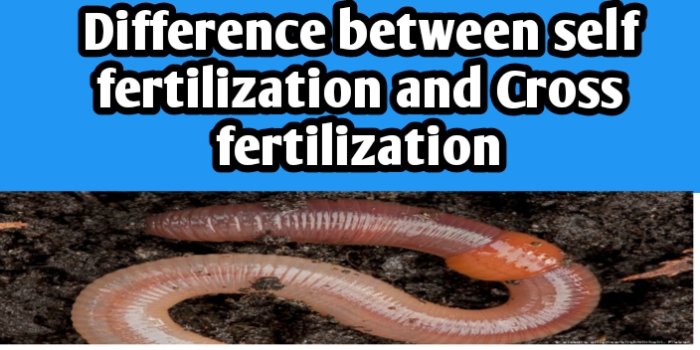
Differences between self fertilization and cross fertilization
◆ Follow me on YouTube
★ WATCH THIS VIDEO
Self fertilization and cross fertilization difference
Self fertilization and cross fertilization difference are following points:- 1) self fertilization is uniparental whereas cross fertilization is biparental, 2) in self fertilization fusing gametes derived from same organism whereas in cross-fertilization fusing gametes derived from two different organism, 3) self fertilization is known as endogamy whereas cross fertilization is known as exogamy, and 4) self fertilization is very rare process generally found in taenia solium whereas cross fertilization is common process found in several organism like frog, cockroach and human beings.
Differentiate between cross fertilization and self fertilization
How do you differentiate/ difference/ distinguish/ compare/ List 3 differences between cross fertilization and self fertilization are following:-
1) self fertilization is known as endogamy whereas cross fertilization is known as exogamy
2) self fertilization is uniparental whereas cross fertilization is biparental
3) in self fertilization fusing gametes derived from same organism whereas in cross-fertilization fusing gametes derived from two different organism
4) self fertilization is very rare process generally found in taenia solium whereas cross fertilization is common process found in several organism like frog, cockroach and human beings.
5) in self fertilization there is loss of biological fitness and genetic variability whereas in cross fertilizing animals have good biological fitness.

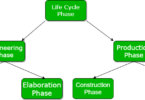

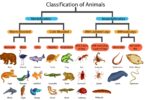
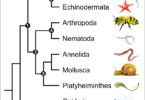
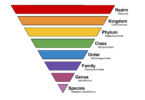
Leave a Comment